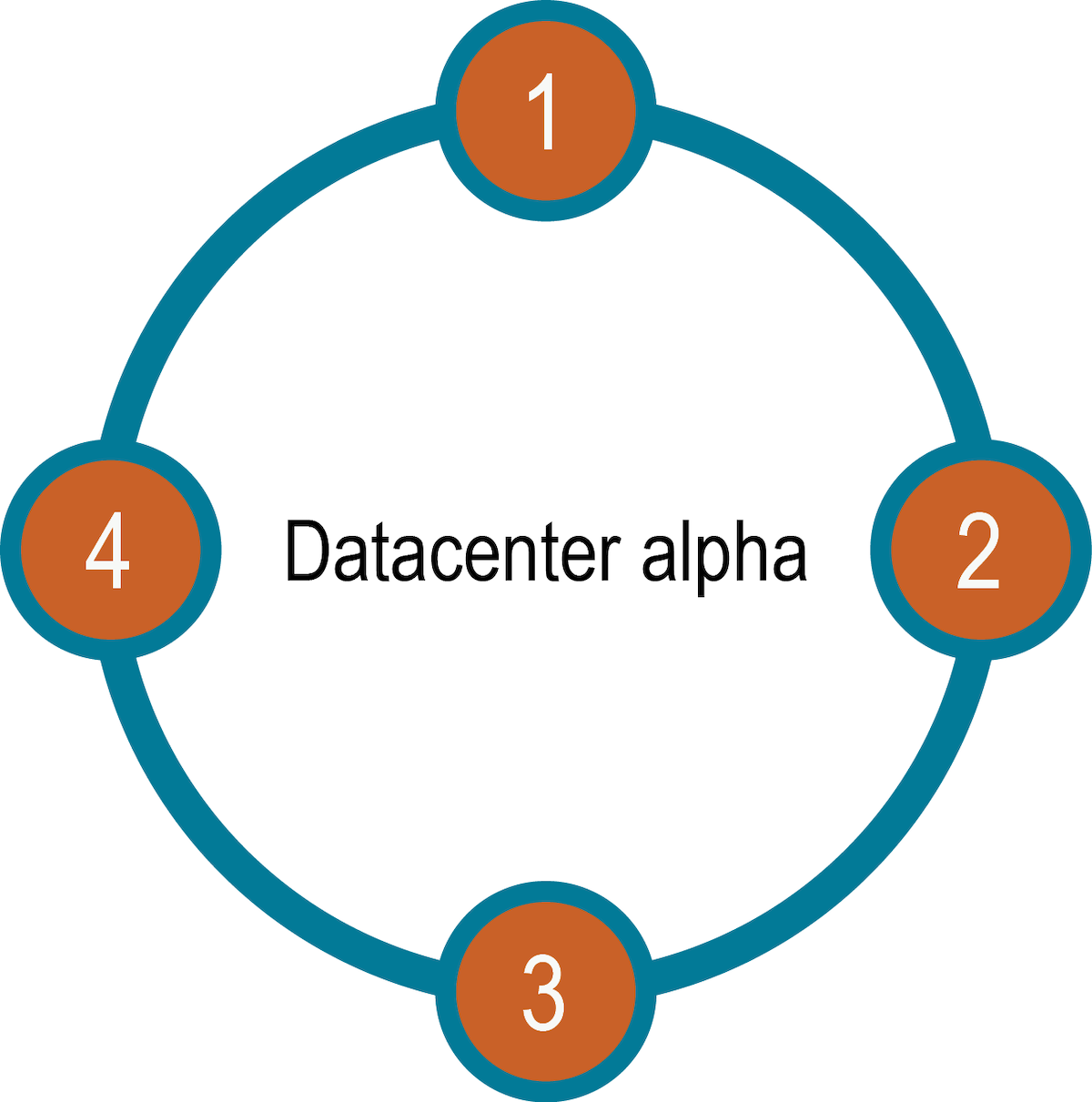Consistent hashing
Consistent hashing allows distribution of data across a DataStax Enterprise (DSE) cluster to minimize reorganization when nodes are added or removed.
Consistent hashing allows data distribution across a cluster to minimize reorganization when nodes are added or removed. Consistent hashing partitions data based on the partition key. For an explanation of partition keys and primary keys, see the partitions and keys.
For example, if you have the following data:
| name | age | car | gender |
|---|---|---|---|
jim |
36 |
camaro |
M |
carol |
37 |
bmw |
F |
johnny |
12 |
M |
|
suzy |
10 |
F |
The database assigns a hash value to each partition key:
| Partition key | Murmur3 hash value |
|---|---|
jim |
-2245462676723223822 |
carol |
7723358927203680754 |
johnny |
-6723372854036780875 |
suzy |
1168604627387940318 |
Each node in the cluster is responsible for a range of data based on the hash value.

DSE places the data on each node according to the value of the partition key and the range that the node is responsible for. For example, in a four node cluster, the data in this example is distributed as follows:
| Node | Start range | End range | Partition key | Hash value |
|---|---|---|---|---|
1 |
-9223372036854775808 |
-4611686018427387904 |
johnny |
-6723372854036780875 |
2 |
-4611686018427387903 |
-1 |
jim |
-2245462676723223822 |
3 |
0 |
4611686018427387903 |
suzy |
1168604627387940318 |
4 |
4611686018427387904 |
9223372036854775807 |
carol |
7723358927203680754 |
